

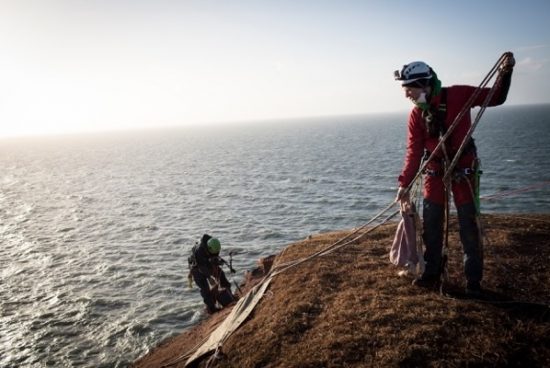
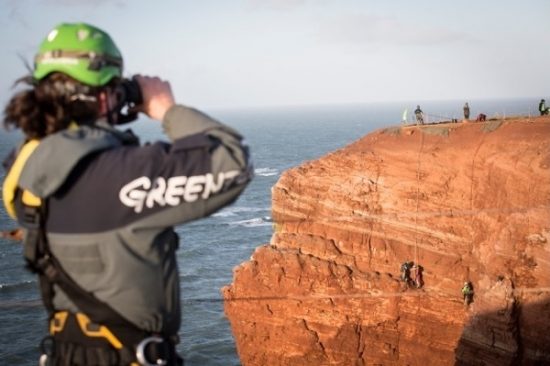
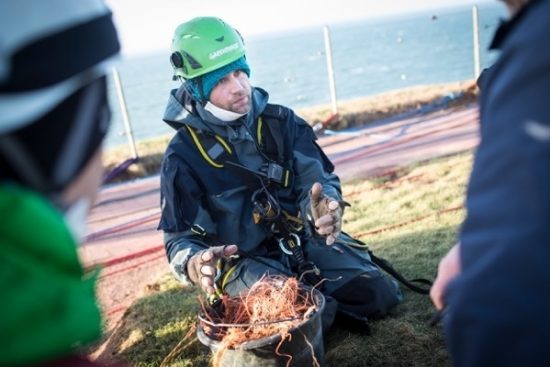
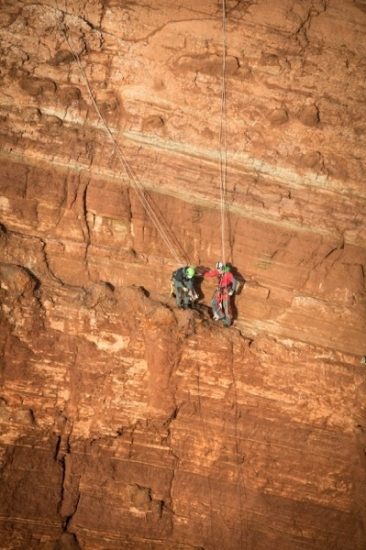
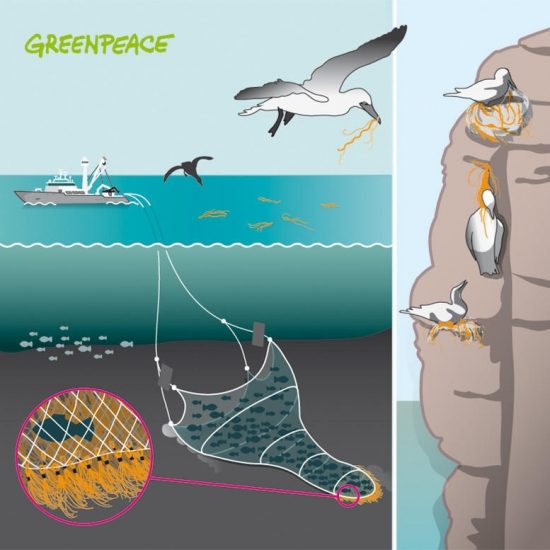
Pilot study initiated to gather more information
High
on the cliffs of Helgoland, a small German archipelago in the North Sea,
environmental activists and journalists are abseiling the high cliffs in an
attempt to collect plastic trash from the nests of birds.
This pilot project, conducted within the Lummenfelsen nature reserve (the
world's smallest nature reserve), strives to measure the impact of
environmental plastic debris on the birds and the marine environment. The
effects on the birds, particularly gannets and guillemots, can be clearly seen.
Quite a number perish after consuming the plastic debris, while others use them
as nesting material, endangering their chicks which get entangled in them.
Although the population of both species is not endangered, the affected birds
die a prolonged and agonising death. For some, their bodies remain entangled in
the nets for years.
In
this initiative of Greenpeace and GEO, an investigation is being undertaken to
find out more about the types of plastics the birds use to build their nests,
the origin of these plastics and whether the deaths of birds can be reduced
through human intervention.
Such
information is currently lacking – a
situation that the researchers hope to improve on, so as to determine the
causes of Lummenfelsen's plastic waste problem.
“The ocean
is the largest garbage dump on the planet,“ said Lars Abromeit, staff editor of
GEO magazine. He added that we quickly lose sight of the consequences of our
actions, but they nevertheless come back to us; thus, he wanted to draw
attention to the issue and explore possible solutions.
Looking at the cliffs from a distance, colourful plastic threads can be
seen. Many of these are the remnants of dolly ropes, which fishermen use to
protect their fishing nets from wear and tear. The dolly ropes are designed in
such a way that their individual threads break off upon contact with the
seafloor.
Calling the usage of dolly lines destructive, marine expert Sandra
Schöttner from Greenpeace said that there must be legislation to prohibit the
use of dolly ropes. “We need a shift to environmentally friendly, biodegradable
alternatives, she said.
Now
that it is not the birds' breeding season, environmentalists and researchers
are using this time to scale the northern part of the rockface to reach the
nests. As part of their research, they retrieve a number of nests while
removing the plastic waste from another group of nests. A third group of nests
are left untouched, to serve as a reference for comparison.
This scientific study is a collaboration of the Jordsand, Biological Institute
of the Alfred Wegener Institute, Helmholtz Centre for Polar and Marine Research
(AWI), Institute of Avian Research “Ornithological Helgoland”, and Research and
Technology Centre (FTZ) at University Kiel, and is supported by Greenpeace.
 Mares
Mares 11th December 2015
11th December 2015 Helgoland, Germania
Helgoland, Germania